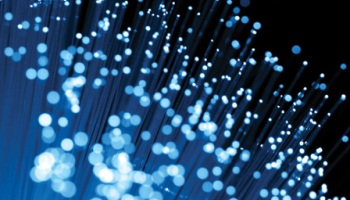Researchers at the Optoelectronics Research Centre of the University of Southampton have given the first experimental demonstration of a fibre-optic technology that transmits data at close to the speed of light, dramatically boosting data transmission speeds and reducing latency compared with current cables.
The new technology uses hollow-core fibres, allowing light to propagate through air rather than glass, according to a paper published this week in Nature Photonics.
Reducing data loss
Light moves fastest in a vacuum, at a rate of about 300,000 kilometres per second. Sending it through glass cuts its speed by about 31 percent, but brings other benefits. In particular, glass allows light and the data it carries to be propagated over long distances with little data loss. Although the idea of hollow-core fibres is promising, those available now “cannot achieve the combined values of loss, bandwidth and mode-coupling characteristics required for high-capacity data transmission”, argued the University of Southampton team headed by Francesco Poletti in their paper.
 The hollow-core fibre developed by the team improve propagation, giving the best data loss to date (3.5 dB per kilometre) and a wide bandwidth of 160 nm. The scientists used it to transmit 37 streams of 40 gigabits per second each, for an aggregate transmission capacity of 1.48Tbps.
The hollow-core fibre developed by the team improve propagation, giving the best data loss to date (3.5 dB per kilometre) and a wide bandwidth of 160 nm. The scientists used it to transmit 37 streams of 40 gigabits per second each, for an aggregate transmission capacity of 1.48Tbps.
Low latency
Moreover, the technology’s latency is dramatically better than current fibre-optic cables, reaching 99.7 percent the speed of light in a vacuum, according to the team.
“This represents the first experimental demonstration of fibre-based wavelength division multiplexed data transmission at close to the speed of light in vacuum,” they wrote.
While the rate of data loss, also known as attenuation, is low considering the latency achieved, it is still not sufficient for use over long distances. The researchers said their technology could be used for “short-reach, low-latency applications” such as exaflop-speed supercomputers or exceptionally fast data centres.
For longer transmission distances, such as transatlantic cables or the fibre networks currently being rolled out by service providers such as BT and Virgin Media, the researchers said more work needs to be done to reduce loss to below 0.2 dB per kilometre.
An IDC report this week found that supercomputers drove record revenues in the high-performance computing market in 2012, as businesses and countries around the world turn to these massive systems in hopes of gaining a computing and economic edge.
Do you know all about 4G and the mobile future? Take our quiz.





